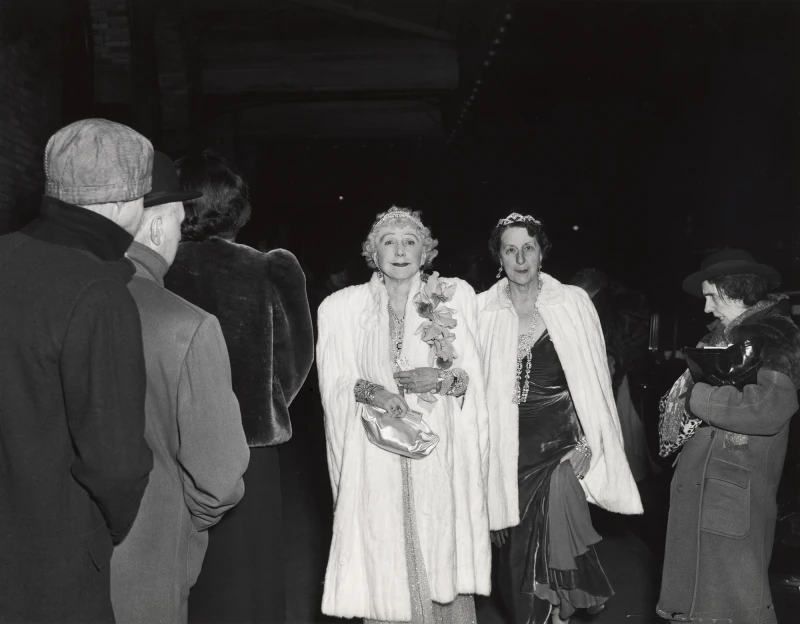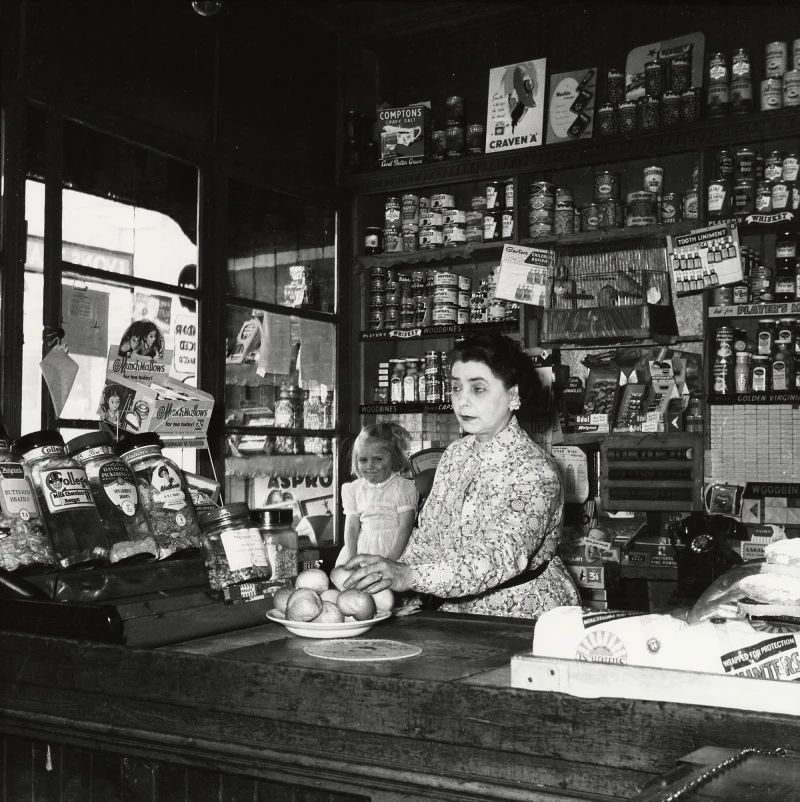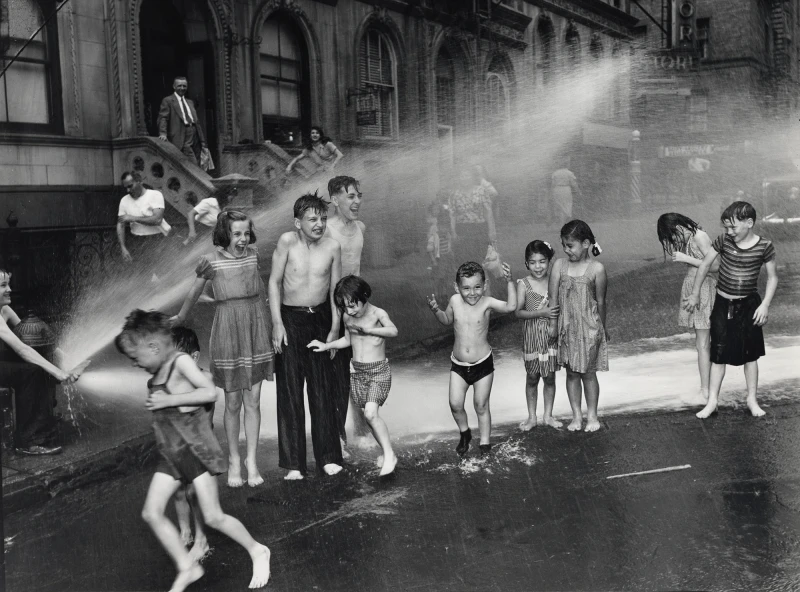Classic Street Style
Weegee | Robert Doisneau | Jimmy Forsyth

Classic Street Style
Weegee | Robert Doisneau | Jimmy Forsyth
Exhibitions
Side Gallery
New York, Paris, Newcastle: Three cities, three photographers, three decades.
This summer, Side Gallery will transport visitors to the Mid-20th Century streets of New York, Paris and Newcastle with their exhibition tryptic, Classic Street Style: Weegee, Doisneau, Forsyth. These free exhibitions showcase three celebrated approaches to street photography, vividly capturing life across different cities.

Weegee and Robert Doisneau are two of the world’s most famous and renowned documentary photographers whose work is held in the region’s AmberSide Collection. They will be exhibited alongside Jimmy Forsyth, an outstanding and revered ‘local’ photographer whose engaging images documented the spirit and transition of Newcastle’s West End.
Weegee, Doisneau and Forsyth all took a humanistic approach In documenting the rhythm of life that surrounded them, but all did so in their unique way. Weegee developed a direct and uninhibited style, juxtaposing grandeur with destitution and highlighting the spectacle of life alongside the shock of sudden death in the "City That Never Sleeps". Doisneau poetically captured everyday life in the working-class Parisian suburbs with warmth, optimism and humour. He showed the world as he would like it to be. And Forsyth had the insight to recognise the transience of his community and their lived environment in a small area of the west end of Newcastle and took the time to document its changing state.

The three exhibitions remind us that although human environments may differ and are in a perpetual state of flux, the human condition remains endlessly fascinating and constant. These photographs provide a candid view of everyday life of those people who called New York, Paris and Newcastle their home in the 1930s, 40s and 50s.
Weegee, the photographer whose images came to define New York, was born Usher Fellig in 1899 in Austria [now a part of Ukraine). He became Arthur Fellig when the family emmigrated to America in 1909. He was raised in a Yiddish-speaking household on the Lower East Side of New York; his father was a peddler, hat salesman, and part-time Rabbi. Fellig also worked many jobs prior to becoming ·weegee the Famous·, including as a passport photographer, commercial photographer's assistant, and darkroom assistant. In 1935, at the age of thirty-six, he boldly quit his darkroom job to become a freelance photographer, then a new and uncertain profession.
Photography became the perfect vehicle for his curiosity and fascination for the city and its inhabitants, which was funded by print media's voracious appetite for content. With an early reputation cemented through his dramatic capture of the city's twilight world and criminal underbelly, closer examination of his work reveals a far greater depth, range and understanding of the stark and subtle contradictions, friction, sparks and joyous realities to be found in the society he presented.
His now iconic images show us a ·warts and all' insider view of the extremes of life during the economic trauma of the Great Depression and beyond. With a direct and uninhibited style, he juxtaposed grandeur with poverty and highlighted the spectacle of life alongside the shock of sudden death in 'The City That Never Sleeps·. He captured the gangland murders, brutal crimes, accidents and devastating fires that impacted the lives of the city's inhabitants, who existed cheek by jowl in tenements and on the streets, through sweltering summers and harsh winters. However, he also documented their ability to survive and find moments of unbridled joy and love, testifying to the resilience of human nature.
Side Gallery hosted the first European exhibition of Weegee·s work in 1981.
Robert Doisneau 11912 - 19941, born in Gentilly, Paris, is one of France's most noted photographers. An internationally renowned pioneer of photojournalism and a champion of humanist photography. During his long career, his poetic approach to street photography recorded everyday life in often playful and surreal images. Choosing to concentrate on the suburbs, which are often regarded as banal, Doisneau wanted to "shed some light on those people who are never in the limelight", and his patience allowed him to capture the fleeting moments of meaning, beauty and humour in such lives.
Doisneau [pronounced Dwanol became an amateur photographer at the age of sixteen but was initially so shy he preferred to capture inanimate objects such as the cobblestones and architecture of his local environment, only progressing to human subjects sometime later.
In 1934 he was employed by Renault during its pre-war peak as an industrial advertising photographer at the car factory in Boulogne-Billancourt, a suburb of Paris. At Renault, Doisneau discovered a new world of workers' solidarity and dignity that he was never to forget. He recorded the life of the company, photographing the workshops and production lines while also working for the publicity department. Five years later, in 1939, he was dismissed from his post for constant lateness.
Shortly afterwards Doisneau was hired by the Rapho Photographic Agency but his career was put on hold at the outbreak of World War II. He was drafted into the French army, but left the military in 1940 and, from then until the end of the war, used his draughtsmanship, lettering artistry, and engraving skills to forge passports and identification papers for the French Resistance. After the war had ended, he quickly became re-immersed in photography with great zeal, creating his most notable work.
Doisneau·s innate shyness never left him, and he photographed his subjects at a respectful distance. It was a self-imposed constraint that proved beneficial to his photography, allowing for space around his subjects and for their backgrounds to have significance. He photographed a vast array of people and events in images marked by an exquisite sense of humour, anti-establishment values, and above all, his deeply felt humanism.
The particular interest he took in working-class environments led to images rich in poetic social realism, which profoundly influenced the film and literature of its time. This exhibition contains some of his most iconic photographs, which have become synonymous with our romantic notions of Paris.
Doisneau has long been an inspiration to the work of the Amber Collective, in particular Sirkka-Liisa Konttinen. Amber's Murray Martin travelled to meet with Doisneau in Paris with a portfolio of Konttinen's work to share and discuss. The prints in this exhibition are selected from those gifted to Amber by Doisneau and which now form part of the AmberSide Collection.
In 1981 Side Gallery brought the work of Jimmy Forsyth to a wider public. His photographs of the Scotswood Road area of Newcastle, taken during the 1950s and early 60s, have become a rare and important document of a working-class community on the edge of irreversible change.
Forsyth came to Newcastle in 1943. He was born and grew up in Barry, South Wales, an industrial town not unlike the west end of Newcastle. He settled into the Scotswood Road community quickly, getting a job as a fitter in Prudhoe, but a few years later suffered an industrial accident and lost an eye. After that, finding another job proved difficult. In the early 1950s, Forsyth bought himself a cheap camera from a pawn shop and started taking pictures of his neighbourhood.
Over the next ten years, Jimmy Forsyth took pictures of all the streets, pubs, shops, and people he knew so well. Being one of the few locals with a camera, he quickly became their photographer, albeit unofficial and unpaid. He usually managed to sell enough of his Boots processed prints to be able to buy the next roll of film. He carried on recording the wholesale demolition of the area and the building of the high-rise flats that replaced the terraced streets. Other photographers documented similar communities in other parts of Britain during the fifties and sixties. Still, none had the same insight, the same intimacy with their subject as Forsyth.

